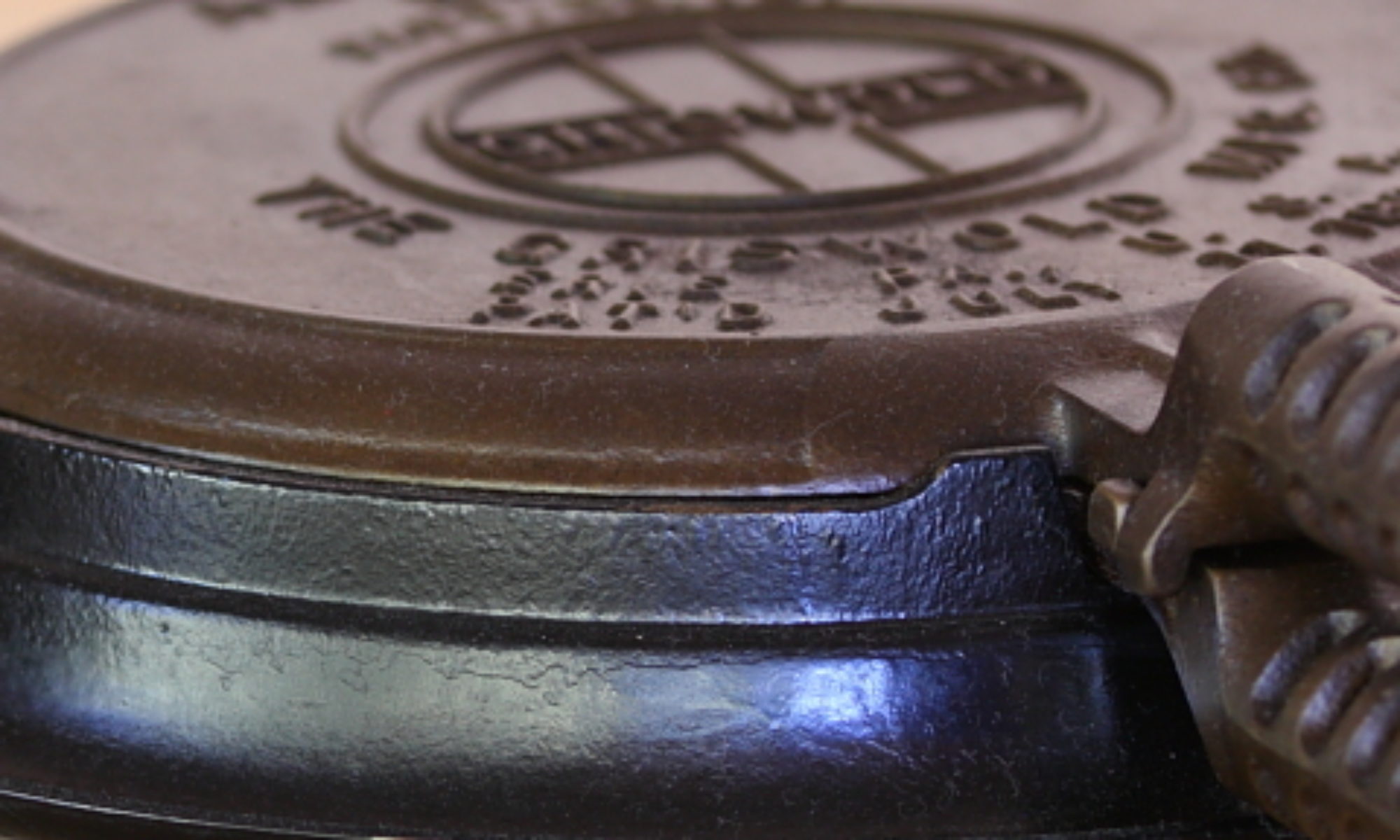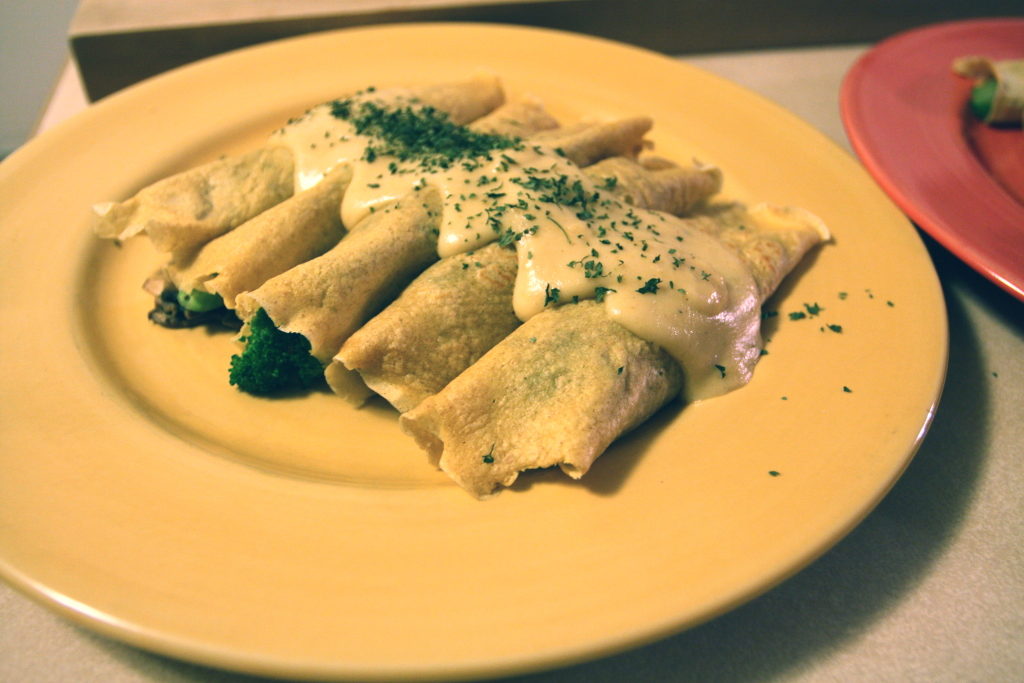
One of our resolutions this year is to eat more whole grains. While they often taste better, they can be a bit more difficult to use, as they take longer to cook, or, in the case of flour, are harder to get the nice, smooth texture that you can get with all-purpose flour.
With our resolution in mind, we decided to try making crêpes with 100% whole-wheat flour. Now, to be honest, we didn’t think these would turn out. But … well, let’s just see what happens at Scratchin Central.
First, this is just the crêpe recipe that we’ve given before, with white whole wheat flour replacing the all-purpose flour. We will again stress that you can find another recipe (including an app) that’s supposed to give you the perfect ratio of ingredients. DO NOT be fooled. You will not get good crêpes by doing so. Instead, just trust us, and use this recipe (the ratios are 1 part egg, 1 part flour, and 2.5 parts liquid) to have great crêpes.
Finally, the photos below are for a half-batch of crêpes. We liked them so much that we had to make some more for a light dessert treat that should be posted next week.
Whole-Wheat Crêpes
Ingredients
- 2 large eggs (110 g)
- 1 cup + 2 Tbs milk (275 g)
- 1 Tbs unsalted butter melted
- 3/4 cup white whole-wheat flour (110 g)
- 1 tsp baking powder
- 1/2 tsp kosher salt
- Canola oil
Instructions
- In a medium bowl, whisk eggs, then whisk in milk and melted butter.
- In another medium bowl, sift together flour, baking powder, and salt. Add to the egg-milk mixture. Quickly whisk together, ignoring small lumps.
- Cover and refrigerate 3 to 6 hours. Stir to recombine, and strain out lumps, if desired (all but the largest lumps will disappear during cooking).
- Place a 5-inch skillet over medium heat. When hot, lightly smear with oil.
- Pour about 1/8 cup of batter into the pan and swirl the pan to spread out the batter. Cook until mostly dry on the surface, 1 to 2 minutes, flip and cook 1 minute more.
Ingredient discussion:
White whole-wheat flour? What’s that? That’s exactly what we said to ourselves when we first saw it in the stores. We just didn’t know if it was wheat flour that was somehow bleached, or what? Well, it’s really simple: white whole-wheat flour is whole wheat flour from white wheat. Most of the wheat grown is hard red wheat, but there are other varieties, including a hard white wheat, which is lighter in color and less bitter. That’s what’s used to mill white whole-wheat flour. Oh, and we use the King Arthur brand; it’s the best national brand of flour. Period. As always, eggs should be from free-range hens, and butter is always unsalted, because you should know how much salt is in your food.
Procedure in detail:
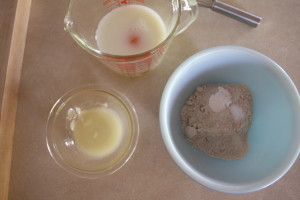
Weigh egg(s). If you have a scale, take the trouble to weigh the eggs after cracking them into a bowl or measuring cup. Not all eggs weigh the same, especially, if, like us, you get them from free-range hens. Once you weigh the eggs, note that you’ll use the same amount of flour (by weight) and 2.5 times as much milk (by weight) to make the perfect crêpe. In our case, the egg (half-batch, remember) was 50 grams, so we weighed out 50 grams of flour and added 125 grams of milk to the egg. If you don’t have a scale, use the approximations in the recipe.
Whisk dry ingredients. Measure the baking powder and salt, add them to the flour, and give it all a good whisking to mix thoroughly.
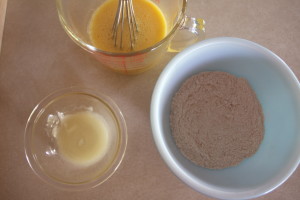
Whisk egg and milk. Using the same whisk, whisk the daylights out of the egg and milk. Try to whisk enough so that it’s a bit frothy, or even quite frothy.
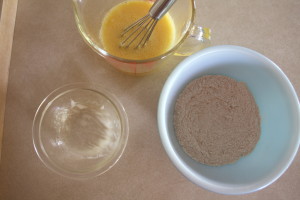
Whisk in butter. Pour the melted butter into the egg mixture and whisk away. Whisk enough so that it’s all mixed.
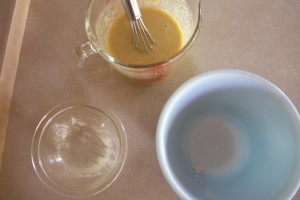
Whisk in flour. Pour the flour mixture over the egg mixture and whisk it in, too. Start slowly at first — the flour might take a while to absorb some liquid — and gradually increase your whisking speed until you have a uniform mixture. If you have a few lumps, it’ll be okay, but we found that we could get a smooth batter.
Refrigerate. Cover the batter with plastic wrap and refrigerate for 3 to 6 hours. Remove from the refrigerator and whisk again right before you begin to cook up your crêpes.
Heat skillet. Place a heavy-bottomed skillet (cast iron is perfect) over medium heat. When hot, wipe it down with a paper towel dipped in canola oil.
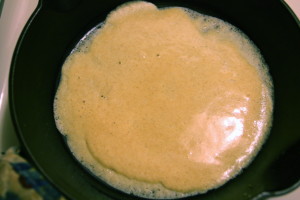
Cook crêpe. Scoop up about 1/8 cup of batter and pour it into the skillet. Lift and tilt the skillet so that the batter covers the bottom of the skillet, then let it cook until the top is dry, about 90 to 120 seconds. The edges will start to curl up just a bit, signaling that it’s time to flip.
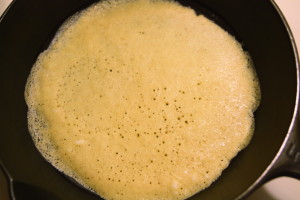
Flip. Carefully flip over the crêpe — don’t worry if you have trouble at first, it gets easier — and cook about 30 to 60 seconds on the other side.
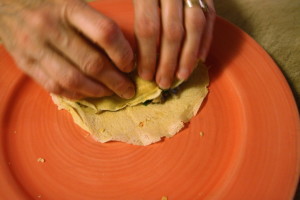
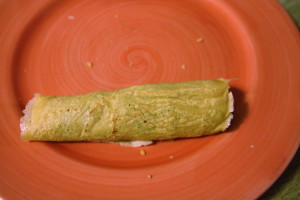
Roll. If you’re using your crêpes as a wrap, roll them around your filling. We’ll show you what we did with ours tomorrow (and another idea next week). Or, you can look at the Smoky Okra Crêpes for another possibility. If you need to, keep the rolled crêpes warm by placing them in a 200°F oven after rolling.
These turned out far, far, better than we’d expected. We tried them on a whim, thinking that they’d either fall apart, be kind of bitter, or difficult to work with. Instead, they behaved exactly like crêpes made with all-purpose flour, had a great, buttery flavor, and were even better-tasting. Hard to believe, but true. So, if you like crêpes, and are looking for a way to get more whole grains into your diet, give these a whirl. We think they’re worth five stars, and we’ll be making these every time we want to seem Frenchified.
